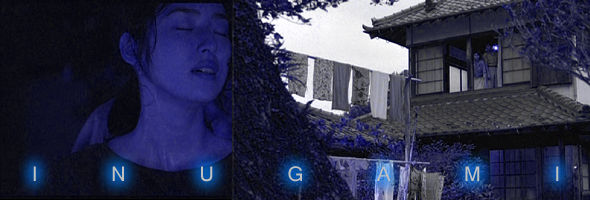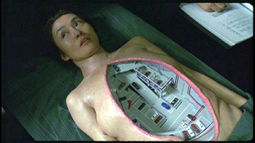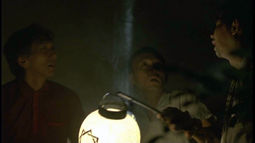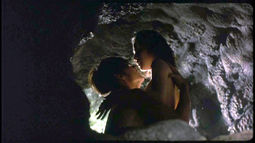
Color, 2001, 105m. / Directed by Masato Harada / Starring Yuki Amami, Atsuro Watabe, Eugene Harada, Shiho Fujimura, Kazuhiro Yamaji / Adness (US R1 NTSC) / WS (1.85:1) (16:9) / DD5.1/DTS, Universe (HK R3 NTSC), Eagle (Italy R2 PAL) / WS (1.85:1) (16:9)
An odd fantasy with tinges of horror and eroticism, Inugami seems deliberately designed to avoid being pidgeonholed into one genre and instead dollops on enough storylines and characters to merit keeping a checklist to avoid confusion. It's all beautifully shot and makes excellent use of the lush, verdant locales, sometimes recalling Herzog in its sense of the comingling of nature and human mysticism.
As with many of its ilk, Inugami seems less concerned with untying all of its narrative knots and instead strives for a heady atmosphere of organic sensuality, coupled with jolts of
All three DVD incarnations of Inugami offer a nice, clean anamorphic transfer, though only the U.S. disc from Adness features 5.1 and DTS audio options. The latter is extremely evocative and makes the most of the ambient sound effects (though the milquetoast music isn't helped out much either way). The disc is surprisingly modest in terms of extras; you get the film's theatrical trailer along with trailers for other Adness titles: Isola, Shikoku and Shadow of the Wraith.
In an isolated mountain village of Omine, middle-aged Miki (Amami) works as a papermaker
 and tends to the needs of her family, the Bonomiyas, a reclusive clan who, according to town legend, are responsible for controlling the inugami (or evil dog spirits) which once threatened the town. As the annual rites of the ancestors approach, she meets traveling school teacher Akira (Harada) and soon makes love with him during a rainy downpour inside a nearby cave... while eerie dog howling can be heard outside. Soon mysterious disasters befall the village and Miki seems to magically grow younger by the day, as Akira comes to realize that his own family, located in a nearby village, may be connected to the strange Bonomiyas and their supernatural connection
and tends to the needs of her family, the Bonomiyas, a reclusive clan who, according to town legend, are responsible for controlling the inugami (or evil dog spirits) which once threatened the town. As the annual rites of the ancestors approach, she meets traveling school teacher Akira (Harada) and soon makes love with him during a rainy downpour inside a nearby cave... while eerie dog howling can be heard outside. Soon mysterious disasters befall the village and Miki seems to magically grow younger by the day, as Akira comes to realize that his own family, located in a nearby village, may be connected to the strange Bonomiyas and their supernatural connection  to the well-being of their people.
to the well-being of their people.
 grotesquerie and nods to modern technology that somehow manage to stay within the tone of the overall film. Drawing on established tropes of Japanese mythology, the film never ventures into the truly macabre (which may frustrate viewers expecting a more traditional Japanese frightfest) but does offer its own subdued charms for those willing to go along with its deliberate rhythms.
grotesquerie and nods to modern technology that somehow manage to stay within the tone of the overall film. Drawing on established tropes of Japanese mythology, the film never ventures into the truly macabre (which may frustrate viewers expecting a more traditional Japanese frightfest) but does offer its own subdued charms for those willing to go along with its deliberate rhythms.
